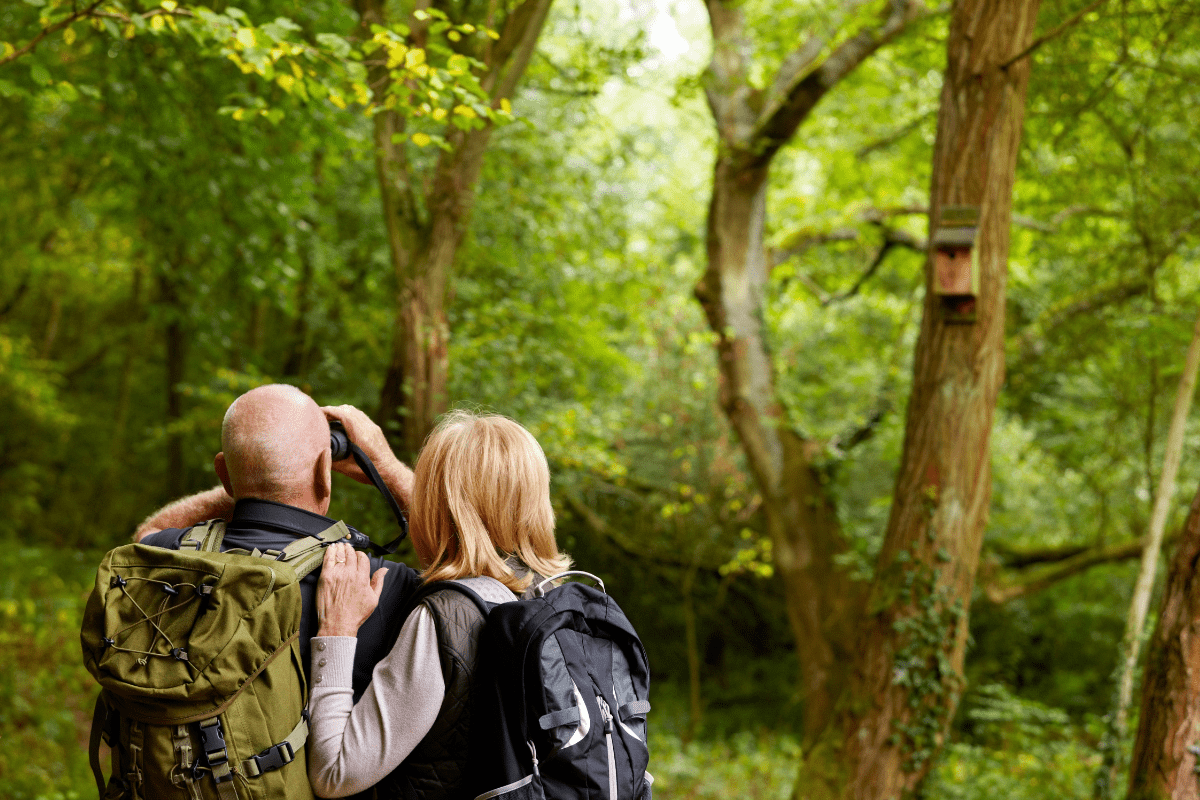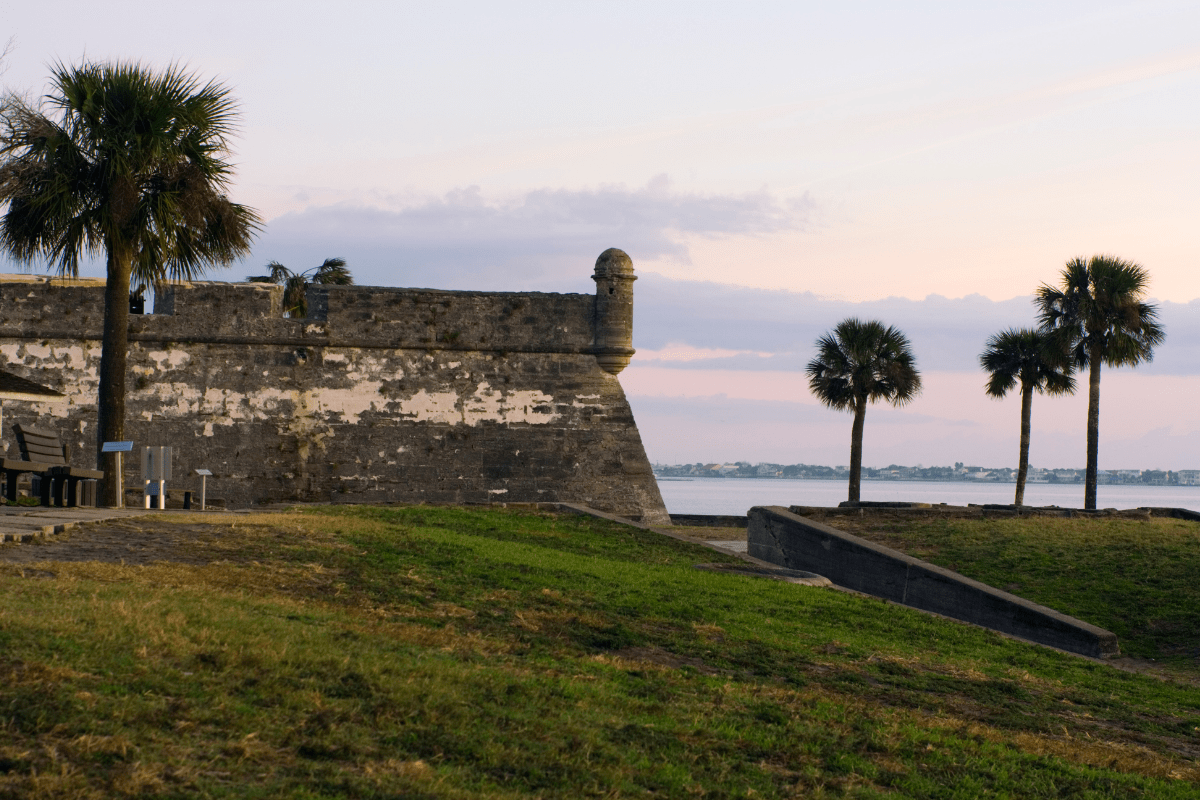Let's be honest… Florida's wildlife reputation mostly involves terrifying alligator encounters and "Florida Man" headlines. But beyond the memes lies America's most accessible wildlife wonderland, where you can safely observe prehistoric reptiles, gentle sea cows, and rainbow-colored birds without needing a biology degree or safari gear.
The wild truth about Florida's creatures
Florida hosts an absolutely bonkers amount of wildlife. We're talking 1.3 million alligators (yes, million with an M), over 500 bird species, and enough manatees to make you wonder if mermaids might be real after all. Spread across 175 state parks and 30 national wildlife refuges, these creatures generate serious cash too… wildlife tourism pumps billions into Florida's economy annually, with state parks alone attracting 30 million visitors who drop $3.6 billion.
Here's what nobody tells you: many of the best spots remain shockingly uncrowded. While tourists cram into theme parks, locals quietly watch hundred-gator congregations at hidden preserves. The secret? Knowing when and where to look, which is exactly what we're about to cover.
When to show up (hint: not in July)
The golden months for wildlife watching
If you only remember one thing from this guide, make it this: November through March equals wildlife jackpot season in Florida. Seriously, it's like Mother Nature flips a switch. Manatees pile into warm springs like underwater puppies, migratory birds arrive in clouds so thick they show up on weather radar, and lower water levels basically create wildlife concentrate.
Think about it… when water sources shrink, every creature needs to drink from the same remaining puddles. It's like the world's best nature documentary, except you're standing right there instead of watching David Attenborough on your couch.
Sea turtle nesting season runs March through October, with different species peaking at different times. Loggerheads do their thing May through August, while green turtles take over June through September. Want to see baby turtles waddle toward the ocean? Time your beach visits for early morning walks two months after peak nesting.
Daily timing that actually matters
Dawn and dusk remain the classic wildlife viewing windows, but here's what the guidebooks don't mention: overcast days are secretly amazing. Animals stay active way longer when they're not baking in the Florida sun (relatable, right?). Plus, no harsh shadows ruining your photos.
After rain showers? Pure gold. Every creature emerges to drink, feed, and generally party like it's 1999. Most tourists huddle inside during Florida's afternoon thunderstorms, missing the post-rain wildlife bonanza that follows.
The heavy hitters: Can't-miss destinations
Everglades National Park: Where gators rule
The Anhinga Trail delivers what I call the "Disney World of wildlife viewing"… except the animatronics are real and might eat you. This 0.8-mile boardwalk loop offers guaranteed wildlife sightings (park rangers' words, not mine). You'll see gators sunbathing close enough to count their teeth, though I don't recommend getting that intimate.
Shark Valley takes a different approach with its 15-mile paved loop. Rangers call it "hands down the best place to see wildlife," and they're not exaggerating. Rent a bike or hop on the tram… either way, you'll cruise past gators who've clearly gotten too comfortable with tourists. The observation tower at the halfway point offers views that'll make your Instagram followers weep with envy.
Pro tip: Visit during winter's dry season when water levels drop. It's like someone drained the swimming pool and all the toys ended up in one corner.
Manatee mania at warm springs
Blue Spring State Park transforms into manatee Grand Central each winter. When water temperatures drop below 68°F, hundreds of these submarine potatoes seek refuge in the constant 72-degree spring water. The half-mile boardwalk lets you observe them from above, which is way better than those tourist trap "swim with manatees" operations.
Want a freebie that rivals paid attractions? The TECO Manatee Viewing Center at Apollo Beach ranked as America's second-best free attraction according to USA Today. Power plant discharge creates bathwater-warm conditions that manatees absolutely love. Multiple viewing platforms mean everyone gets a good view, even when hundreds of people show up on cold mornings.
Bird paradise on Sanibel
J.N. "Ding" Darling National Wildlife Refuge makes bird nerds lose their minds… in the best way possible. This 6,400-acre preserve supports 245 bird species, from hot-pink roseate spoonbills to dinosaur-like wood storks. The four-mile Wildlife Drive stays closed on Fridays (wildlife feeding time), but every other day offers close encounters that'll test your camera's autofocus.
Bailey Tract, the refuge's lesser-known section, attracts serious photographers. The lighting hits differently here, and the compact pond system means you're not hiking miles between sightings.
Myakka River State Park: Gator city
Picture this: a 200-foot wide sinkhole containing over 120 alligators during dry season. That's Deep Hole at Myakka River State Park, and yes, it's as insane as it sounds. The park spans 58 square miles, making it one of Florida's largest state parks.
The canopy walkway suspends you 25 feet up in the trees… a nice break from staring down at things that might eat you. Over 100 bird species call this place home, plus the occasional bobcat or otter if you're lucky.
Hidden gems locals gatekeep
Circle B Bar Reserve: The Lakeland secret
Circle B Bar Reserve earned USA Today's "51 Great Places to See Wildlife" designation, yet most tourists have never heard of it. This former cattle ranch turned wetland wonderland offers Everglades-quality wildlife viewing minus the Everglades-level crowds. And get this… it's completely free.
The 1,267-acre reserve hosts over 200 bird species, nesting bald eagles, and alligators you can safely observe from just 15 feet away thanks to elevated trails. Locals treat this place like their personal nature documentary set.
Gordon River Greenway: Urban wilderness
Smack in the middle of Naples, the Gordon River Greenway preserves 140 acres of legit mangrove forest. The yellow-crowned night herons maintain a rookery here, basically running their own bird apartment complex. Well-lit paved trails mean you can actually visit at prime wildlife hours (dawn and dusk) without stumbling around in the dark.
Lake Norris Conservation Area: Osprey central
Lake Norris in Lake County rocks one of Central Florida's highest osprey nest concentrations… over 100 of them. The 3,682-acre preserve protects ancient cypress forests where Florida black bears occasionally cruise through. Kayaking here feels like paddling through a cathedral, especially during winter when water levels drop and everything gets more concentrated.
Your seasonal wildlife calendar
Understanding Florida's wildlife patterns transforms you from tourist to wildlife whisperer:
Manatee season essentials:
- Mid-November through March prime time
- Water temps below 68°F trigger gatherings
- Cold fronts = manatee parties
- Crystal River hits 500+ individuals
- Blue Spring matches those numbers
Sea turtle timeline:
- March through October nesting window
- Loggerheads peak May through August
- Greens dominate June through September
- Morning beach walks reveal tracks
- Hatchlings emerge 60 days later
Bird migration madness:
- Spring surge: mid-April through May
- Fall festival: July through November
- Florida Keys October peak: 25,000 birds per mile per hour (not a typo)
- Painted buntings winter here exclusively
- Roseate spoonbills breed February through July
Expert wisdom that'll keep you safe(ish)
John Brueggen, Director of St. Augustine Alligator Farm, drops this truth bomb: "Alligators are like icebergs"… the visible parts represent maybe 10% of what's actually there. But before you panic, he also notes that "more people are killed by white-tailed deer and golf balls than alligators in this state."
Maintain these distances like your life depends on it (because it might):
- Alligators: 50-100 feet minimum
- Most other wildlife: 25 yards
- Panthers: Are you insane? Back away slowly
- Manatees: Look but absolutely don't touch
Alex Freeze from the Florida Wildlife Corridor Foundation reminds us that everything connects: "You cannot separate what happens on land from what happens in the springs from what happens in the ocean." Translation? That garbage you toss affects the manatee you're trying to photograph.
Gear that won't break the bank (mostly)
Optics you actually need
Skip the tourist trap gift shop binoculars. The Vortex Viper HD 8×42 models ($800-1,000) deliver pro-level performance with lifetime warranties. Too rich for your blood? The Vortex Diamondback HD 8×42 (~$300) punches way above its weight class.
For photography, you need 400-600mm of reach unless you enjoy extreme close-ups of alligator teeth. Renting makes sense for occasional use… check out camera rental shops in Tampa and Orlando.
Safety stuff that matters
Bug protection isn't optional in Florida. Get yourself some 20-30% DEET or picaridin-based repellent. Permethrin-treated clothing works wonders against ticks, which party year-round in our endless summer.
Light-colored, long-sleeved shirts serve double duty: sun protection and easy tick spotting. Yes, you'll sweat. Welcome to Florida.
Save this number in your phone right now: 866-392-4286. That's the FWC Wildlife Hotline for reporting nuisance gators or injured animals. They're available 24/7 because Florida wildlife doesn't follow business hours.
Real talk about conservation
Here's the uncomfortable truth: Florida's wildlife faces serious pressure. Manatee populations struggle with seagrass die-offs. Sea level rise threatens turtle nesting beaches. Development proposals for state parks sparked massive public backlash in 2024.
Your role? Pretty simple actually:
- Never feed wildlife (illegal and stupid)
- Keep your distance for photos
- Pay those park fees gladly
- Pick up your trash plus some extra
- Support conservation organizations
The rare stuff worth chasing
Florida panthers number just 120-230 adults statewide. Your odds of seeing one in the wild? Roughly equivalent to winning the lottery while getting struck by lightning. Big Cypress National Preserve offers the best chances during dawn or dusk drives, but most folks settle for the ambassador cats at Homosassa Springs.
Key deer look like regular deer hit with a shrink ray. These pint-sized cuties live exclusively in the Keys, with National Key Deer Refuge on Big Pine Key offering the most reliable sightings.
Florida scrub-jays exist nowhere else on Earth, with only about 4,000 remaining. Jonathan Dickinson State Park hosts the largest accessible population. They're surprisingly bold, often landing on visitors hoping for peanuts (don't feed them though).
Your wildlife viewing starter pack
Download these before you go:
- Florida Tides app (5,500 stations)
- eBird (real-time sighting reports)
- iNaturalist (species ID help)
- Seek (instant nature identification)
Florida's wildlife viewing opportunities blow away most African safaris, minus the jet lag and questionable water. The combination of accessible locations, predictable seasonal patterns, and sheer species diversity creates endless possibilities for memorable encounters.
Success comes down to timing, patience, and respecting the fact that you're visiting their home. Show up during the right season, bring decent optics, maintain safe distances, and prepare for experiences that'll ruin regular zoo visits forever.
Whether you're watching hundreds of manatees pile into a spring, counting alligators at Deep Hole, or photographing spoonbills at sunset, Florida's wild side delivers adventures worth bragging about. Just remember… in Florida's wilderness, you're never the apex predator, no matter what your ego tells you.





